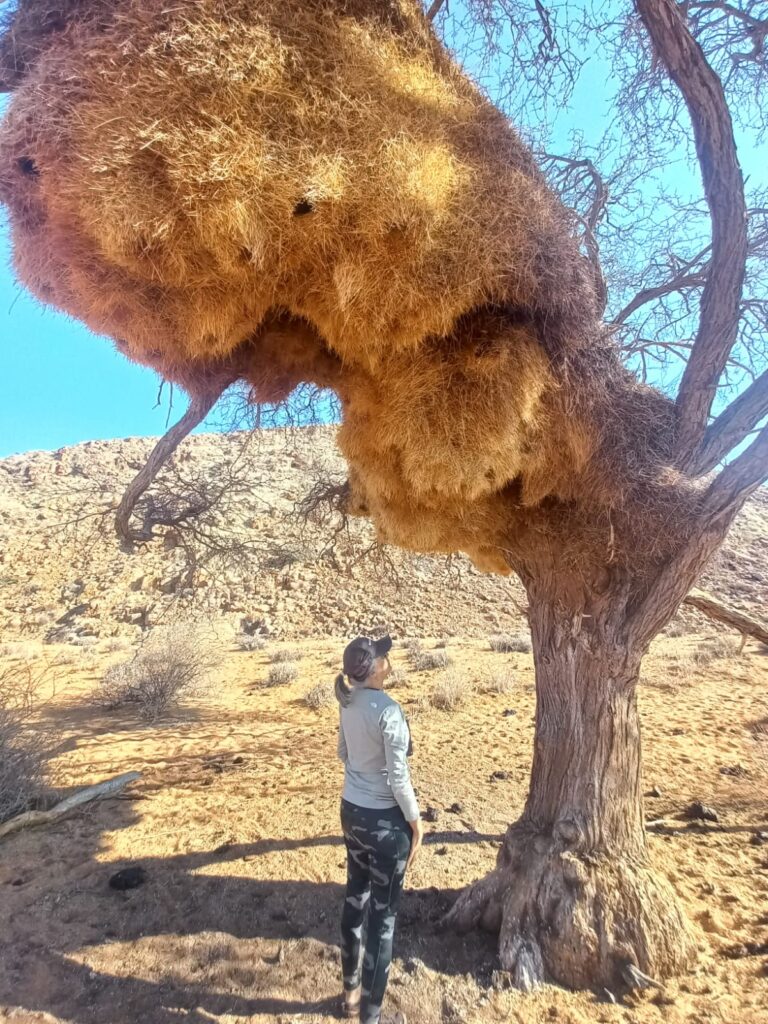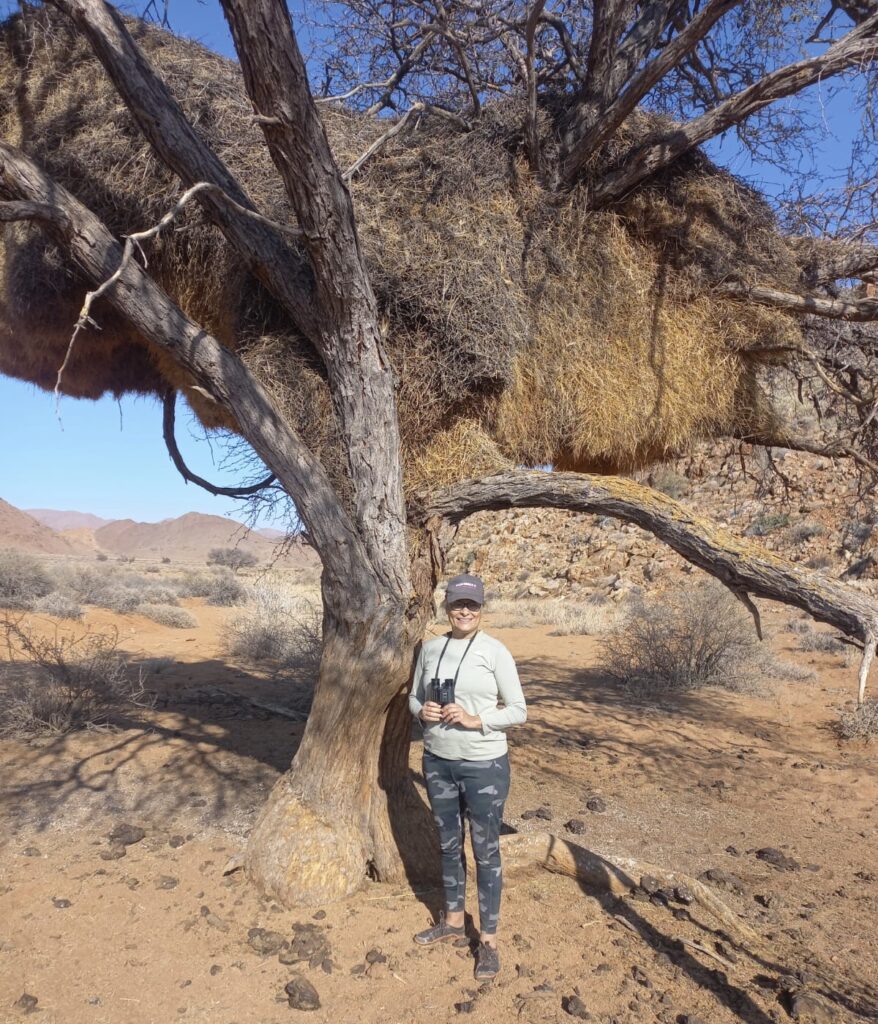It seems that each installation becomes a reimagining of the nest—not just as an object, but as a proposition. When I suspend these wire forms in space, I’m not merely arranging sculptural elements for visual engagement. I’m proposing a way of being-with—the materials, the shadows, the air, the viewer, and the place itself. The nest, in this expanded sense, becomes a site of negotiation: How do we hold space for fragility? What might care look like if we think of it as structure? Can the idea of home be stretched, undone, and rewoven in the air?
Suspension, then, is not only a formal solution but a performative act. It invites attentiveness. The wire forms—poised yet precarious—draw attention to weight and weightlessness, to gesture and pause. They ask the viewer to look up, to move slowly, to become aware of their own position in relation to the work. In this way, the suspended nest resists static meaning. It offers an architecture of becoming—open to collapse, open to transformation. Each installation is a renewal. The nest is not fixed in form or meaning. Its context—whether a white gallery, a domestic space, or an open field—reshapes how it is encountered, how it is felt. It becomes an ongoing proposition: to attend to the world differently, to recognise the quiet politics of holding and the poetics of suspension.
In terms of installation, I find my biggest learning is how I started to view spatial relationships, possibilities of viewer interaction and sensory experiences one can create. Installation art integrates environments: each installation can be a renewal. The work is not fixed in form or meaning. Its context—whether a white gallery, a domestic space, or an open field—reshapes how it is encountered, how it is felt. It becomes an ongoing proposition: to attend to the world differently, to recognise the quiet politics of holding and the poetics of suspension.
On a website, Ilustromania, I read the following:
Installation art has revolutionized the way we experience and understand art by transforming it into a dynamic and immersive medium that engages all the senses. Through its emphasis on spatial interaction, emotional resonance, and thematic depth, it challenges traditional notions of artistic boundaries. Installation art connects audiences to concepts ranging from personal identity to universal themes, often bridging art with technology, architecture, and the natural world. Its enduring legacy lies in its ability to foster profound and memorable encounters, leaving a lasting impression on both the individual and collective imagination.
The ecological references in my work are not literal.

They are relational.

I think of the sociable weaver birds whose communal nests teach us about resilience and adaptation. I think of my own hands, looping and coiling wire as if drawing in air. Each form becomes a meditation on grief, repair, and the slow labour of becoming and interconnection between human and nature (plants, animals, birds, land….).
I do not want to contain the body of work within fixed limits – I dream to allow it to extend to dialogues accros disciplines, communities and ecologies.
I looked at Participatory and Relational Art:
Relational Aesthetics—a term coined by Nicolas Bourriaud—is a key component highlighted in the IMMA discussion ( ) In this approach, artworks aim to generate interactions, experiences, and social connection, creating “free areas” in time and space that contrast with everyday life. The artist becomes a catalyst for a relationship rather than just a creator of objects. This article frames participatory and relational art as processes centered on exchange, presence, and time, not just the finished object.
Nicolas Bourriaud’s concept of Relational Aesthetics frames the artwork not as a finished product but as a site for social experience. My suspended wire objects — particularly when installed in accessible, non-gallery spaces like an a shed, a food shop or a local festival — operate as “relational platforms.”
Instead of being viewed passively, the installation:
- Invite people to move through them.
- Encourage a slowing down, an awareness of shadow, texture, breath.
- Often appear nestled in the air, suspended — almost waiting to be “inhabited” through attention.
I think that from a theoretical perspective, the installation becomes a “free space,” as Bourriaud puts it — temporary micro-utopias that allow viewers to gather, pause, and connect (with the work, with each other, or with the site). My practice aligns with dialogical art in that it seeks not control, but responsiveness. I am not offering answers — I try to cultivate attentiveness and mutual shaping between object, maker, viewer, and site. Even if the work doesn’t involve direct co-creation, it fosters participation through embodied experience:
- Viewers walk among hanging objects.
- They see shifting shadows, trace lines with their eyes.
- Their presence changes how the work is seen and even how it behaves (e.g., movement in air).
Another theoretical link can be seen in the way that Participatory art is not always about active making — it can be about relational presence. My work invites subtle participation by offering a sensorial, quiet form of relationality. I would also think that like socially engaged and community art practices, my work can dissolve the gallery frame. I am curious about ecologies, nature, land, and care — and these settings amplify those dialogues.
Thinking about my practice:
My installations do not seek to present answers but to hold space — for attention, for conversation, for resonance. Whether suspended in a white-walled gallery or nestled into an outdoor space or inside a shed, the work adapts and listens. I do not see these wire forms as static objects, but as gestures — invitations to pause, to move slowly, to notice shadow and breath. In this way, my practice leans toward the relational: the installations become sites for quiet encounters, shaped not only by my hand but by those who walk among them. I am drawn to spaces where art can dissolve into life — where the line between exhibition and everyday is porous, and where meaning arises not from didactic intent but from shared presence. My work is not participatory in the traditional sense, but it asks something of the viewer: to inhabit time differently, to join a subtle dialogue between place, material, and memory.